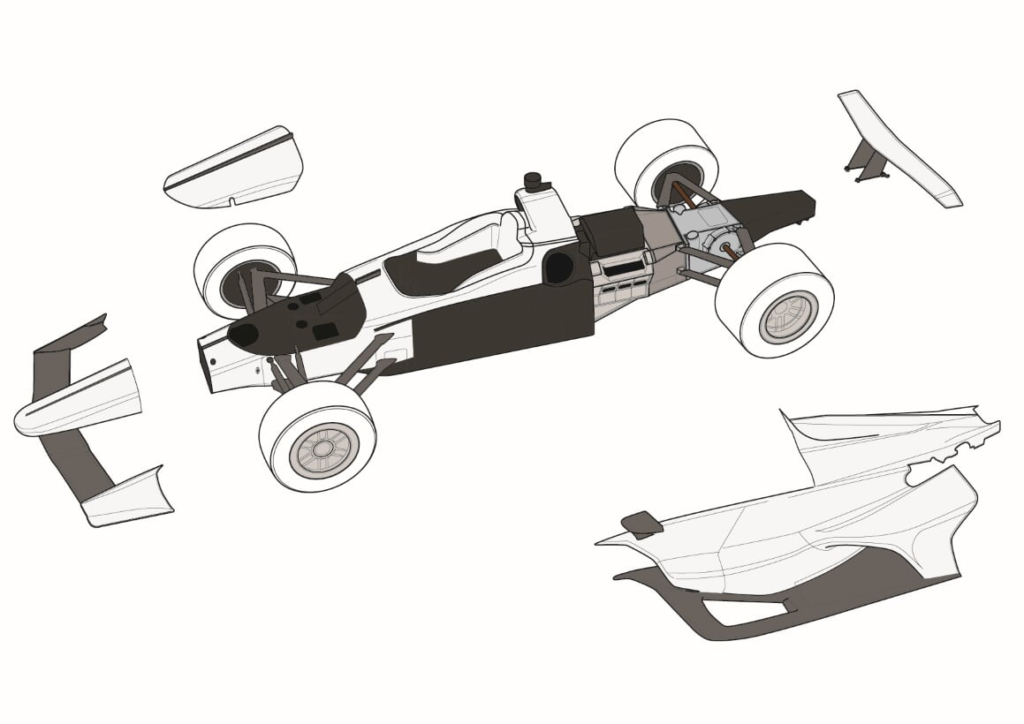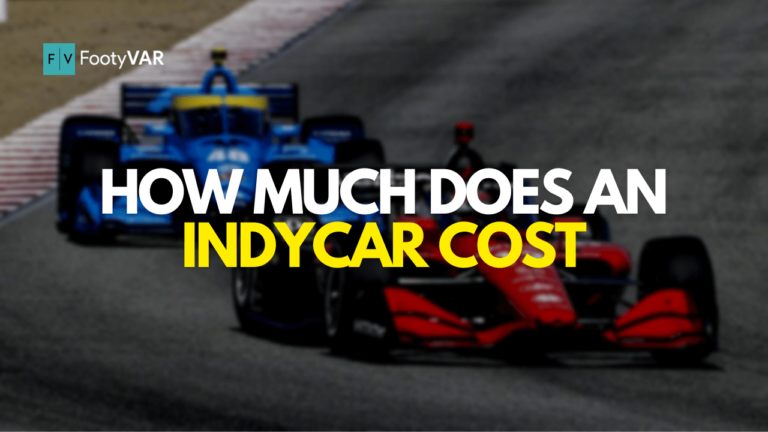IndyCar racing has attracted fans and drivers alike for over a century. With high speeds, daring maneuvers, and world-class competition, the series has become a staple of the racing world. At the heart of this excitement lies the essential component – the car.
We’ll provide an in-depth analysis of the costs of owning and operating an IndyCar, covering aspects such as the chassis, engine, tires, and team expenses.
Chassis and Aero Kits: The Backbone of Performance

Chassis: The Foundation of Speed

The chassis, or the car’s structural frame, is a significant part of an IndyCar’s cost. The current spec chassis, the Dallara IR-18, is a mandatory component for all teams in the series. The price of a new chassis is approximately $385,000. It’s important to note that this figure covers only the basic structure and excludes additional components such as wings, suspension, and brakes.
Aero Kits: Customizing for Speed and Handling
Aero kits are another essential part of an IndyCar’s cost structure. These kits contain bodywork elements that enhance a car’s aerodynamics, improving speed and handling. In the series, two manufacturers supply aero kits: Chevrolet and Honda. Each kit costs roughly $145,000, bringing the combined chassis and aero kit to approximately $530,000.
Engines: Powering Through the Competition
IndyCar engines are supplied by two manufacturers: Chevrolet and Honda. Teams must lease engines from one of these suppliers for a season, with a lease costing between $800,000 and $1 million. This price covers the engine itself and the required maintenance and support from the manufacturer.
Tires: Gaining Traction on the Track

Firestone is the exclusive tire supplier for the IndyCar series. Tires are critical in racing, providing grip and stability at high speeds. Teams are allocated a specific number of tire sets for each race weekend, with costs averaging around $2,000 per set. A team may spend between $100,000 and $150,000 throughout a season on tires.
IndyCar Cost Breakdown
| Item | Price Range |
|---|---|
| New Indycar Chassis | $200,000 to $500,000 |
| Used Indycar Chassis | Varies |
| New Engine | $75,000 to $125,000 |
| New Wheels and Tires | $10,000 to $20,000 |
| Safety Equipment | $5,000 to $20,000 |
| Electronics/Data Systems | Upwards of $50,000 |
Team Expenses: Behind the Scenes of Success

Crew Salaries: Investing in Expertise
A successful IndyCar team requires a dedicated, skilled crew, including engineers, mechanics, and support staff. Salaries for these professionals can vary greatly, but on average, a team will spend around $2 million to $4 million annually on crew salaries.
Transportation and Logistics: Moving the Show on the Road
With races taking place all over North America, transportation and logistics are significant expenses for IndyCar teams. This includes moving the cars, equipment, and personnel from race to race. Teams can spend between $500,000 and $1 million per season on these costs.
Testing and Development: Refining the Competitive Edge
To remain competitive, teams must continuously test and develop their cars, seeking performance improvements throughout the season. The cost of testing and development can vary but often exceeds $1 million per year.
Total Costs: The Price of Victory
Considering all the expenses outlined above, the total cost of owning and operating an IndyCar for a season can range between $5 million and $9 million. However, this figure does not include sponsorship deals or any potential prize money earned throughout the season.
